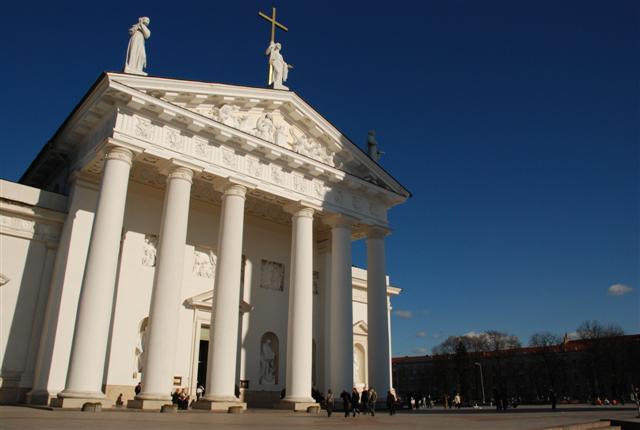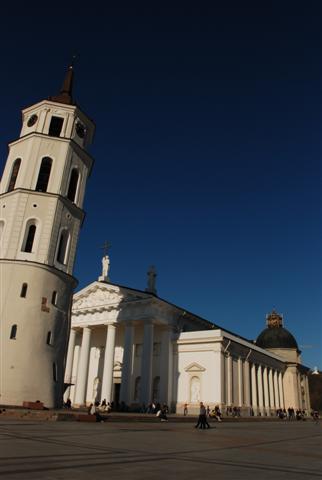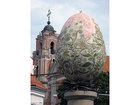Walking Tour in Vilnius Old Town
2010-06-30 13:47
If you have a short stay in Vilnius and can spend only 2 hours to visit its places of interest, this city walk is what you need.
Walking tour start at the Cathedral Square, the very heart of Vilnius. This is the place where the history of Vilnius begins. Long before Lithuania converted to Christianity (this happened in 1387), this place had been the main pagan sanctuary in the country. Before the Christian period, a pagan shrine is believed to have stood on the place of the Vilnius Cathedral (its full name is St. Stanislaw and St. Wladislaw Cathedral Basilica). The first church was built here by King Mindaugas in the 13th century, and since that time it was rebuilt numerous times, till it took the shape of the modern Classicist style building. The three sculptures that you can see on the pediment are the sculpures of St. Stanislav, St. Helen and St. Casimir (the patron saint of Lithuania). Turn around to see Gediminas Avenue, the central and most crowded street in Vilnius. Take a walk around the Cathedral. Look out for the reddish tiles on the square, marking the old castle wall, destroyed long time ago. As you pass the sculptures on the left side of the Cathedral (these are the rulers of Lithuania and Poland), make a stop by a beautiful grey chapel at the right rear corner on the Cathedral. You will hardly miss it – unlike the rest of the Cathedral, this chapel is Baroque. This is St. Casimir Chapel, the place where the remains of Lithuania’s Patron are preserved. Note the memorial plaque on the wall of the Chapel. If you have some free time, enter the Cathedral (there is a second entrance on its right side) to admire the interior of St. Casimir Chapel. Be sure – being one of the most remarkable examples of Baroque style in Europe, this place is worth visiting. In addition to the beautifully decorated altar (by Pietro Perti), two large frescoes (by Michelangelo Palloni), silver sculptures of Lithuanian and Polish rulers, the most important object in this chapel is a large coffin with the remains of St. Casimir. Thousands and thousands of pilgrims visit this sacred place annually, not to mention tourists.
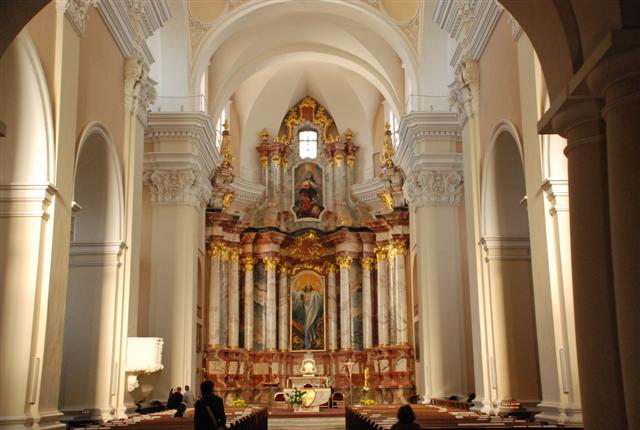
We exit the Cathedral from the same side as we entered. On your right, stands a big monument depicting a man holding a sword, with his horse. This is Grand Duke Gediminas, the founder of the city. According to the legend, he founded Vilnius at this place under the influence of his dream in which he saw an iron wolf howling on top of what is now known as the Gediminas hill (it is on your left). Look out for a wolf embedded in the monument – an iron wolf is the symbol of this city. On your left, just behind the Cathedral, there is a big castle. There are building works going on here. The building, towering at this site is the newly rebuilt Lower Palace, a copy of the Palace of Great Dukes, dating to the 13th century and destroyed in the 18th century. Today Lithuanians are rebuilding it to remind the world of the glory and uniqueness of what was once ruined.
Continue up the hill, along the cobbled path leading to the top of the hill, where you find the remnants of the Upper Castle. The original castle was built in the 1200`s, but was destroyed. The current building was erected at the direction of the Grand Duke Vytautas. The Duke`s castle ended up being used as a prison 200 years later, and even though its walls are ten feet thick, it was heavily damaged by Russian troops in the 17th century. The castle lay mostly ruined until the early 20th century, when restoration work began. Today it is one of the must-see destinations in Vilnius, not just because of its history, but because its height offers a wonderful view of the historic district. Climb the Gediminas tower, one of the most visited place in Vilnius, to enjoy the wonderful panorama of the city.
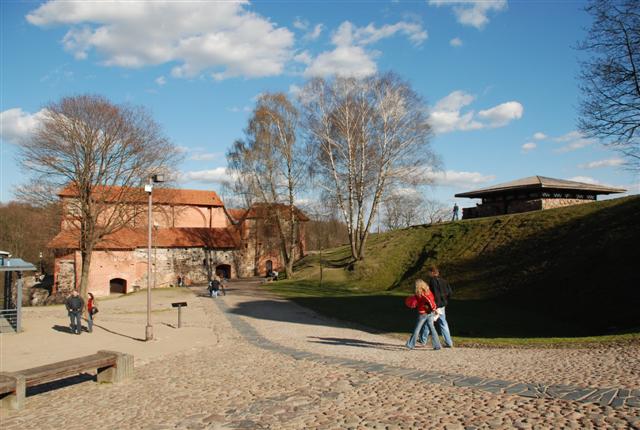
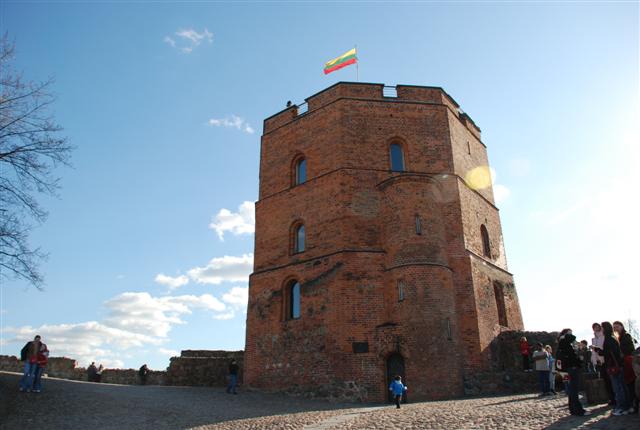
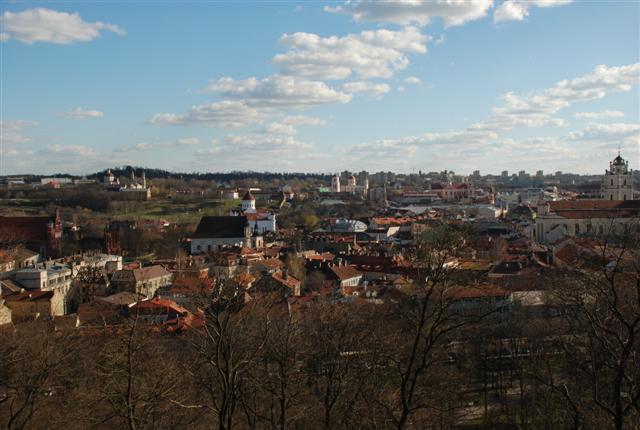
Back to the Cathedral Square, we are heading to Piles street, the oldest street in Vilnius. Plunge into the atmosphere of the Old Town, with its charming Medieval buildings and cobbled pavement. If you care for a cup of coffee or a more substantial meal, there are plenty of restaurants and caffes along Pilies Street.
From Piles turn left to a small Bernardinu Street. It will bring you to another place of interest – the Ensemble of St. Anne`s and Bernardine`s Churches, the extraordinary Gothic composition of the 15th century. St. Anne`s church is the most famous late Gothic building in Lithuania and one of its symbols. Built using 33 different kinds of bricks, it has been standing here for five centuries. There are many legends and stories shrouding the church, the most popular of which is that upon seeing St. Anne`s church, Napoleon said that he would like to place it in his palm and move it to Paris.
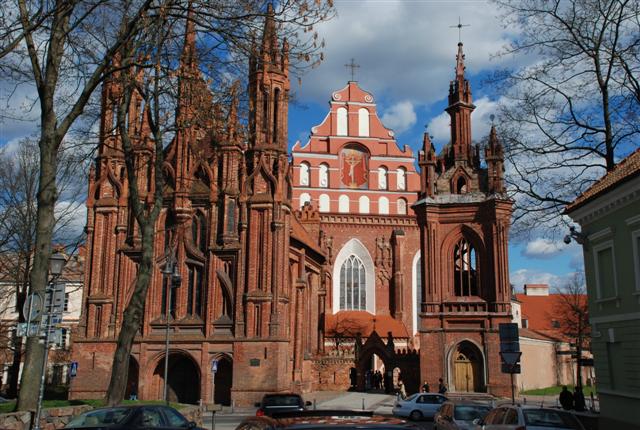
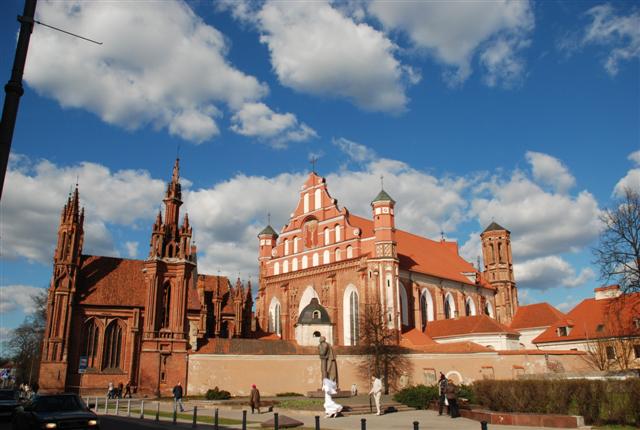
Make sure you do not miss the Bernardine`s church, one of the largest Gothic churches in Lithuania.
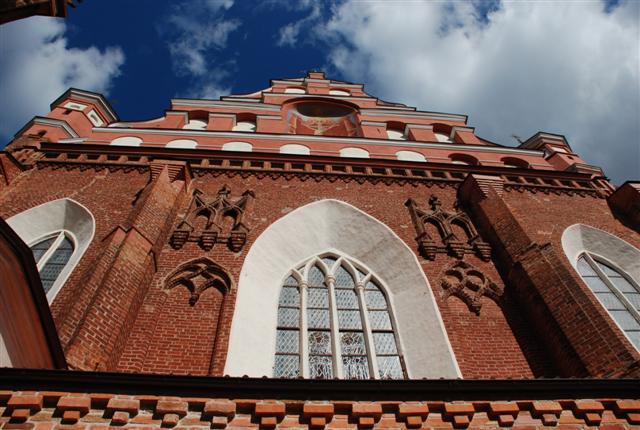
On the left of the Gothic ensemble is a monument to Adomas Mickevičius, the great poet of Lithuania and Poland of the 19th century.
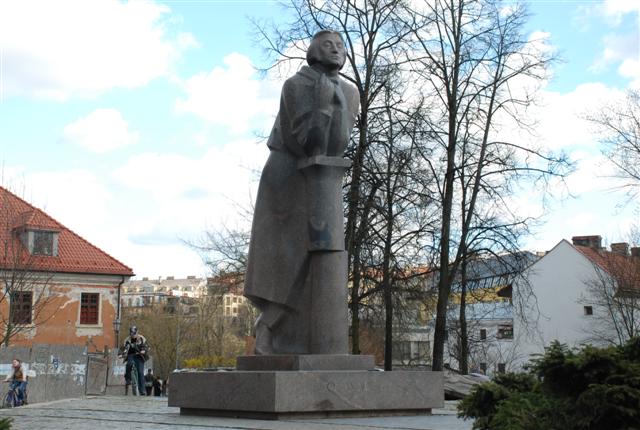
Continue to the right until you see a bridge over the river Vilnelė. The area behind the bridge is known as Užupis quarter, the “independent republic of artists”. It might remind you of Monmatre in Paris.
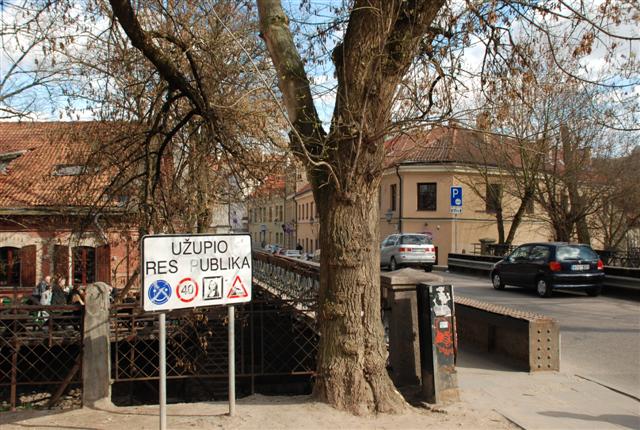
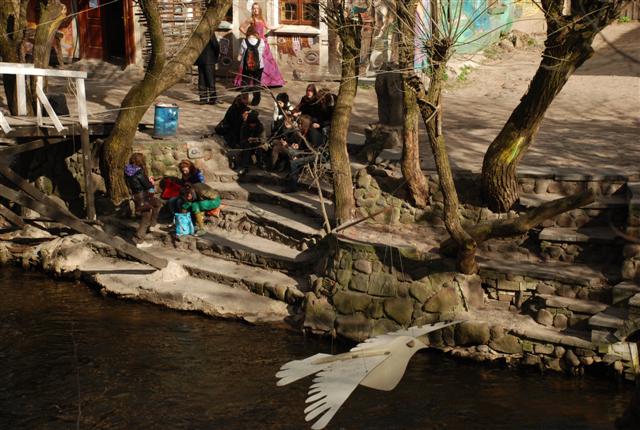
To return to Pilies, take Šv. Mykolo street – one of its side streets. On the corner of Mykolo and Pilies, turn right and take a few steps down the street till you see the turning to Skapo Street. Follow Skapo, which will bring you to Daukanto Square. The picturesque building dominating the square is the Presidential Palace. Built in 14th century for the first bishop of Vilnius Andrius Vasila, the palace was rebuilt in the 19th century in late Neo-Classical style. Today, after massive renovation, the palace houses the offices of the President of Lithuania.
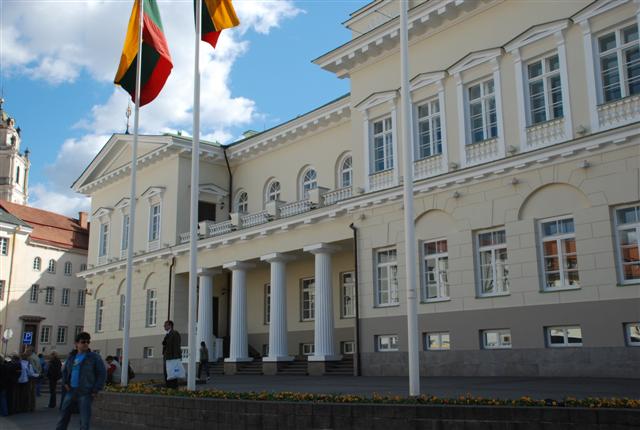
Adjacent to the Dukantas Square, on the left side of the presidential Palace, is the complex of the Vilnius University, the oldest university in Lithuania dating to the 16th century. The most prestigious school of higher education, it was founded by Jesuits in 1579 and for more than four centuries it has been the leading cultural and scientific centre in Lithuania. The courtyard that you are standing in is the Library Courtyard, one of the 13 courtyards of the university. Your attention will be attracted by the images depicting different planets on the top of the university building. This is the Astronomy Observatory of the Vilnius University, the fourth oldest observatory in the world dating to 1753.
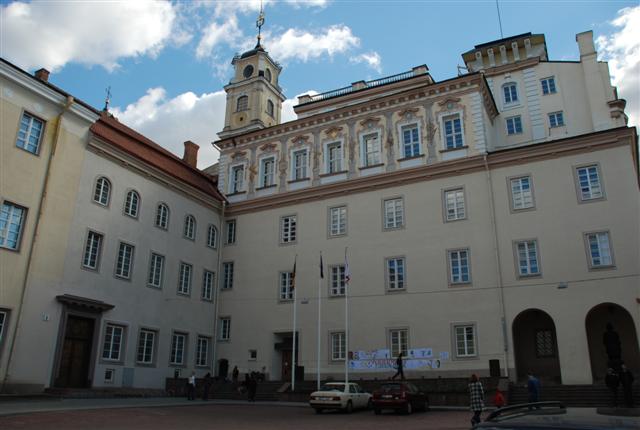
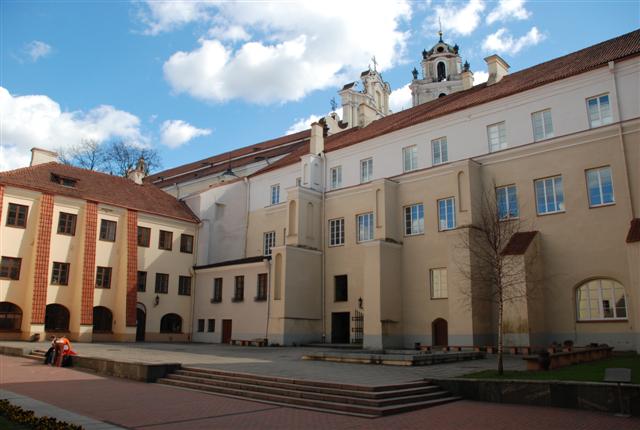
Take a walk in the university courtyards (you will be asked to by a ticket at the entrance). Visit St. John’s Church in the Grand Courtyard. The church gained its present late Baroque forms in the18th century. However, just as many other churches in Lithuania, it suffered many losses over its lifetime. Thus, in the 18th century, half of its beautiful altars were removed from the church, while during the years of the Soviet occupation the church was used as a warehouse. Enjoy its interior, having the largest organ in Lithuania.
Back to the Library Courtyard, we head to the former Jewish Ghetto along Universiteto Street. Stop at the intersection of Universiteto, Šv. Jono, Dominikonų and Gaono streets to give a glance over your left shoulder at the belfry of st.John’s Church – the tallest building in Old Town (68 metres). Dominikonų Street on your right is renowned for its beautiful architecture – it used to be the street were many rich nobles lived.
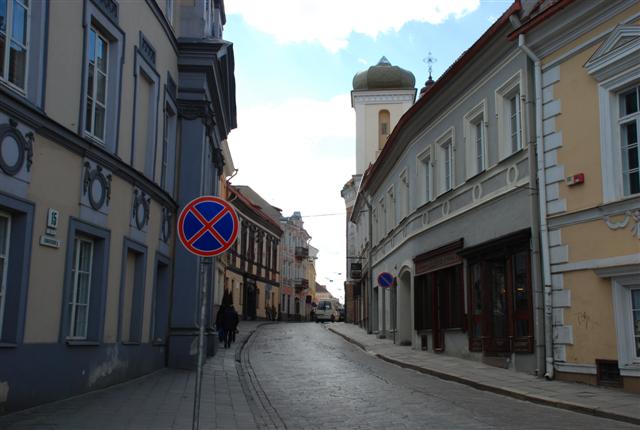
The quarters in front of you are known as the Former Jewish Ghetto (this territory is referred to as the Small ghetto; this is one of the two ghettos that once existed in Vilnius). Just think that Vilnius was once known as the "Jerusalem of Lithuania" and by June 1941 had at least 80,000 of the Jewish population. On September 6, 1941, Nazis sealed the streets of the ghetto and the Small Ghetto lasted only six weeks. During this period 10,000 people were massacred in Paneriai (a wooded area 10 kilometres from the city). The larger ghetto was liquidated on 23 September, 1944, with only several thousand of Jews who managed to survive.
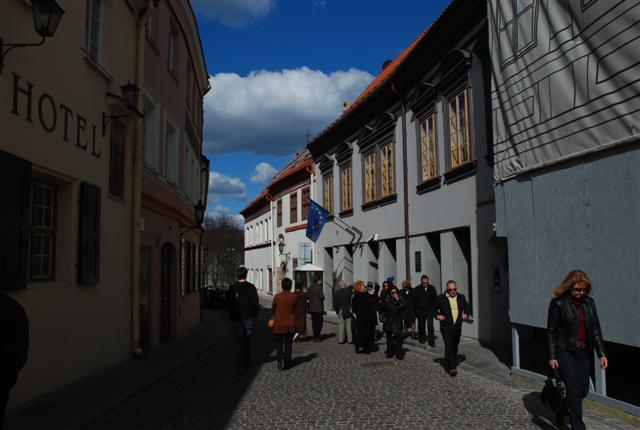
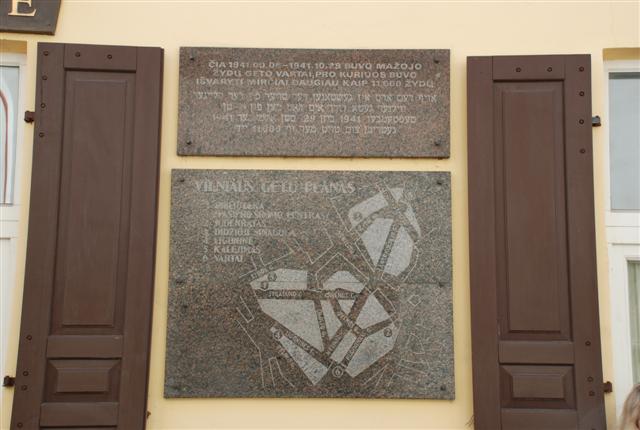
As you are walking on Gaono Street, look out for the plan of the Vilnius ghettos hanging on the wall of one of the buildings on your left. Stop at the corner of Gaono and Stiklių to admire the beauty of narrow and curving streets in this part of the Old Town. Before you continue down Stiklių street, take a look at one of the most luxurious restaurants in the city named “Stikliai“, located on the corner of Gaono and Stiklių.
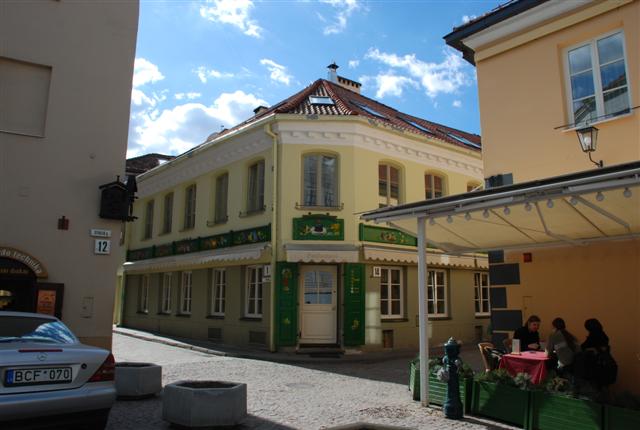
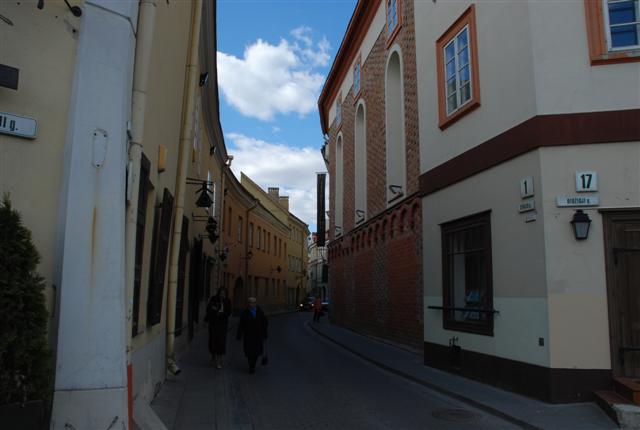
At the end of Stiklių street, a large square opens before your eyes. This is the Town Hall Square, the very heart of the Old Town. In older times this was the intersection of all important trade routs in the city and the market place, as well as the place of executions. The current building of the Town Hall was designed at the end of 18th century by the famous architect Laurynas Stuoka-Gucevicius, the author of the present Cathedral. The building housed the town theatre, later the State Art Museum was moved there and in 1998 the Town Hall was given back to the municipal government. Now it recalls its historic past: this is the place for city celebrations.
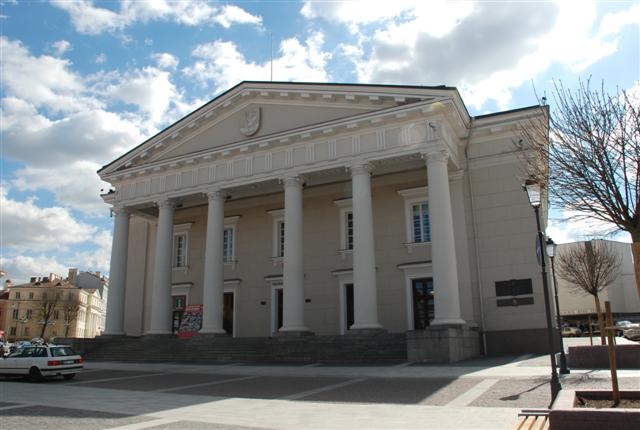
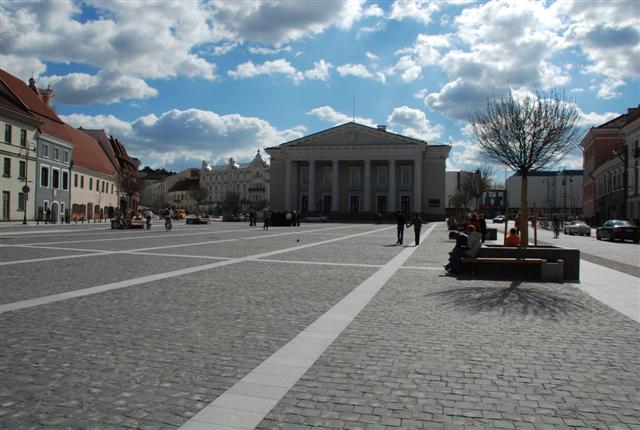
On the wall of the Town Hall there hangs a plaque with a quote of the President of the United State George Bush’s speech, given on his visit on November 23, 2002.
On the right of the Town Hall is another major street of Vilnius – Vokiečių (German) Street. Vokiečių Street is one of the oldest streets in Vilnius. If was named after the German merchants and craftsmen who were residing here as far back as the 14th century. In the summertime it has an active fountain and outdoor café. And in wintertime, Vokiečių Street turns into some kind of Christmas Avenue.
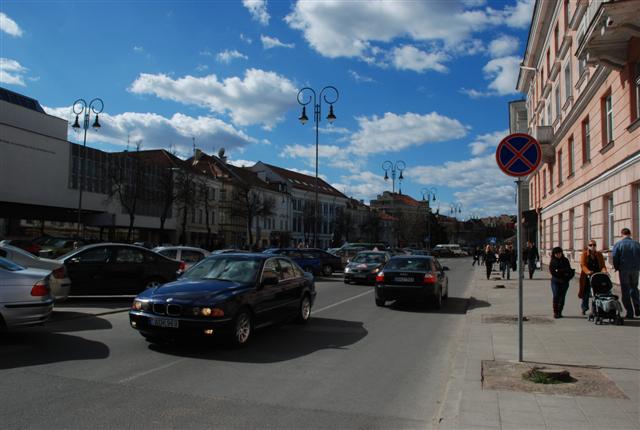
Continue left, down Didžioji street past the Astoria Hotel. Stop by St. Casimir Church, one of the earliest, classic baroque structures in the city. This church has a truly dramatic history – built as a catholic church in the 17th century, it was turned to a Russian Orthodox church in the 18th century. During the period of the Soviet period, St. Casimir Church was a Museum of Atheism, until it was returned to the faithful in 1988. One of its most fascinating features is the dome with a crown.
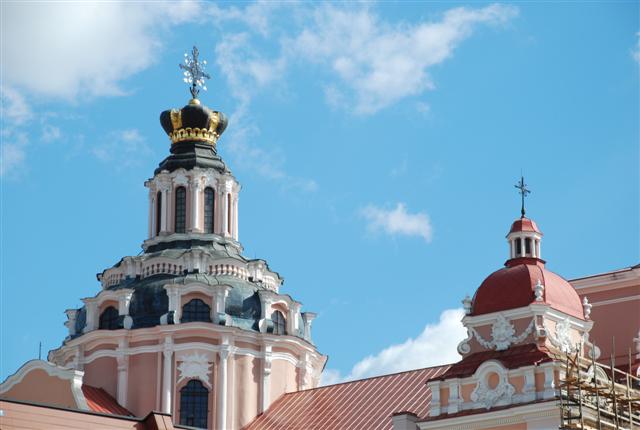
Leaving St. Casimir Church, continue through Didžioji Street. Stop for a moment by the Lithuanian National Philarmonic, where the first Lithuanian opera “Birutė” was performed on November 6, 1906.
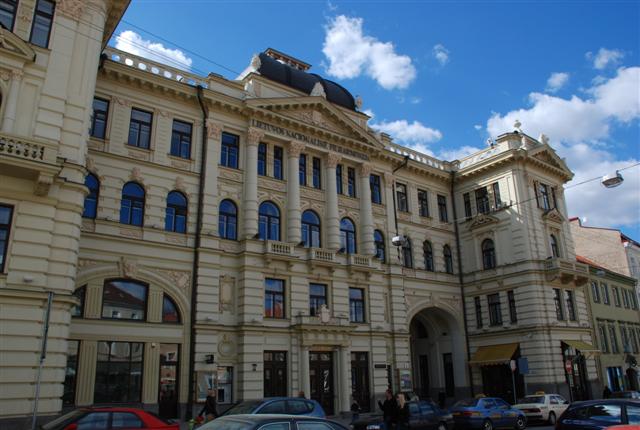
Behind the Philharmonic Society's Hall your eye will be drawn to exceptionally graceful, wavy gates of the Basilian monastery, one of the most splendid late baroque structures in Vilnius. They are decorated with a composition celebrating the Holy Trinity. After passing through the arch of 18th century gates, you enter a spacious yard, in the middle of which looms a cube-shaped church (Holy Trinity Church) having gothic, baroque, and Byzantine elements.
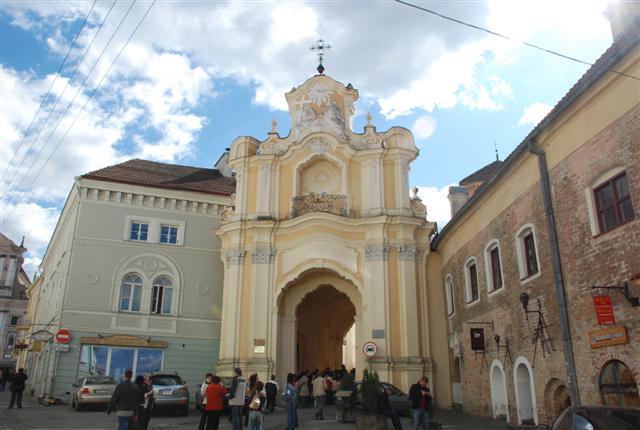
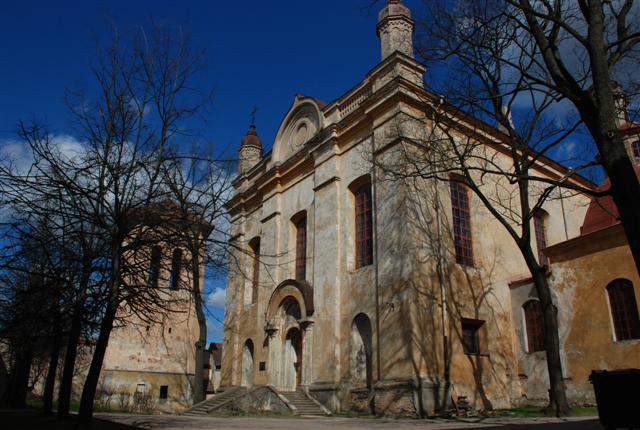
Leaving the gates follow Aušros Vartų street until you find yourself standing in front of the Church of St. Theresa dating to the 17th century. This is an outstanding example of early Baroque, built of sandstone, Swedish granite and marble (none of these materials can be found in Lithuania, so they were delivered from abroad).
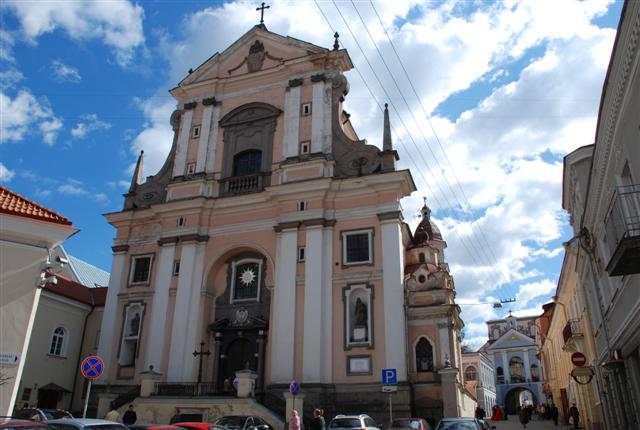
As you are standing by the Church of St. Theresa, take a look around. This place is frequently referred to as the “crossroads of religions”. Indeed, on the left of the Church of St. Theresa there is the Russian Orthodox Church of the Holy Spirit. Enter its courtyard and turn around – you will see the dome of the Holy Trinity Church. This is why this place is known as “crossroads of religions” – three religions “meet” here (Catholicism, Russian Orthodoxy and Greek Catholicism).
Visit the Church of the Holy Spirit to admire its beautiful interior, representing an example of Baroque style in Orthodoxy. Here lie the well preserved bodies of three martyred saints – Anthony, Joann and Eustachius.
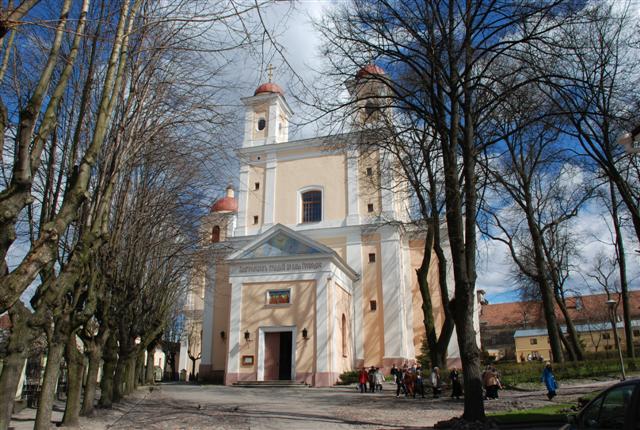
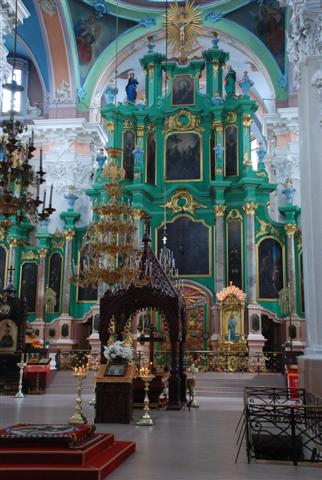
As you exit the church, continue through Aušros Vartų street past the Church of St. Theresa. The street ends with The Gates of Dawn, one of the symbols of the city of Vilnius and the final point of your excursion. These gates are a famous Catholic shrine not only in the whole of Lithuania but also abroad. Built on the road to the city of Medininkai and originally called the Medininkai gates, they were one of the original five gates of Vilnius built together with the city wall.
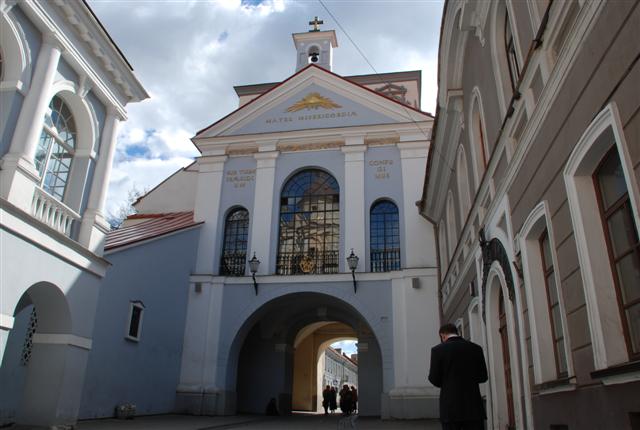

Raise your eyes to see the chapel with the picture of the Mother of Mercy of the Gates of Dawn. The image of the Virgin Mary, well known among Catholics worldwide, attracts thousands of pilgrims from all over the world. The status of this place is so special that the street before the chapel is considered as a church (most people take off their hats on this street and cross themselves when passing through the gates).
************
View Larger Map
Are you satisfied with our travel and leisure guide? The best thanks from you we get, if you book a hotel, an air ticket or rent a car by clicking on the links below. After this, we get some commission, which do not charge you anything, but help us to take care of this portal. A payment is safe, not in our servers - our chosen partners take care of the payments and keep your data safe through SSL technologies. Reliable partners have the widest choice of hotels, air companies, rent-a-car points. They can offer you the best prices and no extra charge. Our personnel tried those services travelling over the world and were very satisfied.
Buy airline tickets to Lithuania
Hotels in Vilnius You find here
I would suggest planning an excursion to Vilnius old town starting from Gediminas avenue. It is not difficult to get there:
By public transport: trolleybuses can bring you to Lukiskes (nr.: 4, 10, 11, 13, 17), Opera (nr.: 4, 10, 11, 13, 17), The King Mindaugas (nr.: 2, 3, 14, 20), Vincas Kudirka square (nr.: 6, 2, 3, 5, 12, 14, 20).
By car: there are several parking-paylots: one near the Opera and Ballet theater, an underground parking-lot under Vincas Kudirka square, on the roadsides of Tilto street and one closed parking-lot in Islandijos street.


